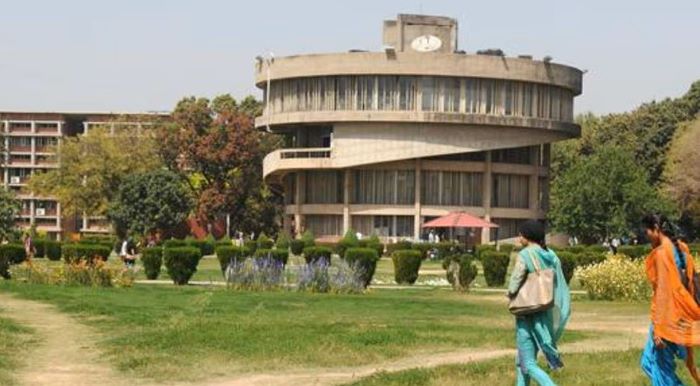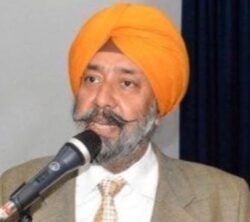 While we trade constitutional insults, the university’s finances remain fragile. The uncomfortable history is well known: Punjab froze its share at ₹20 crore in 2011, far below the notional 40% of the maintenance deficit that the state had signalled in the 1970s. The Centre capped its grant in 2014–15 and later moved to a 6% annual increment—still insufficient to cover salary and pension inflation. The predictable result: recurring deficits, periodic panic, and politicised brinkmanship.
While we trade constitutional insults, the university’s finances remain fragile. The uncomfortable history is well known: Punjab froze its share at ₹20 crore in 2011, far below the notional 40% of the maintenance deficit that the state had signalled in the 1970s. The Centre capped its grant in 2014–15 and later moved to a 6% annual increment—still insufficient to cover salary and pension inflation. The predictable result: recurring deficits, periodic panic, and politicised brinkmanship.
Why does this matter for governance? Because governance design without a predictable funding compact is theatre. Elections versus nominations cannot fix a budget that depends on spasms of grants, fee hikes, and cross-subsidies from examination revenue across roughly two hundred affiliated colleges in Punjab and Chandigarh.
Punjab’s “our university” sentiment is real—but so is the map
The emotional claim—“PU is our university”—is rooted in history and in the continuing affiliation of colleges across districts like Ludhiana, Ferozepur, and Hoshiarpur. That map matters: the university today runs regional centres and constituent colleges within Punjab and affiliates a large number of colleges beyond the Union Territory. Its academic and examination systems bind PU to Punjab’s students every single academic year and semester. Yet its inter-state status ensures that others too have a seat at the table—and, verily, the Centre is now in the driver’s seat.
Agitation will not restore alumni votes; reform can still protect voice
Alumni voting had become a distinctive—if often unwieldy—feature of PU’s democracy. Its abolition will feel like disenfranchisement to many, and the instinct is to agitate. But agitation is unlikely to reverse a notified structure before courts speak. A wiser response is to ring-fence meaningful voice within the new framework, and to insist on financial and academic reforms that actually improve student outcomes.
Here is a constructive, doable agenda that respects inter-state realities while preserving PU’s character.
Iconic Clock Tower of Panjab Univerity, Lahore.
A five-pillar reform plan for Panjab University
1) Re-create democratic voice through an Alumni & Stakeholder Council (statutory advisory with sunlight).
If graduate elections are gone, build an Alumni and Stakeholder Council with public minutes, mandated consultation on statutes, budgets, and appointments. Give it nomination rights for a fixed number of Senate seats (where the Act allows) and guaranteed hearing rights before policy changes. This restores voice without recreating electoral cost and litigation. Advisory councils in other national institutions show such voice can be real if backed by transparency.
2) Lock a funding compact in writing—formula first, politics later.
Adopt a published three-part formula: (a) Centre/UGC maintenance grant indexed to pay-commission drift; (b) Punjab’s contribution restored to a realistic share on a glide path from the frozen ₹20 crore to a negotiated percentage over three years; (c) a regulated, transparent fee policy with scholarships, so that students are not the balancing item of last resort. Put the formula into a tripartite MoU (Centre–Punjab–PU) reviewed every three years. Without this, every Senate or Syndicate will be a crisis committee.

3) Professionalise the executive: tenure, KPIs, and insulation.
Convert the Syndicate’s day-to-day management into contracted, time-bound executive leadership with published KPIs on placements, research output, NAAC/NIRF performance, and student services. Whether members are elected or nominated matters less than whether they are evaluated. Draw on best practice from compact boards and professional executives across the higher-education ecosystem.
4) Clean up the cross-subsidy maze.
Self-financed or partially self-financed programmes should not quietly bleed general revenues. Publish programme-wise income–expenditure dashboards each semester; where deficits persist for more than six consecutive terms, mandate a remedial plan (pricing, intake, faculty mix, or closure/merger). Protect core liberal arts and laboratory sciences from blunt fee pressure by endowing them through targeted alumni gifts. Transparency will end the annual blame game.
5) Keep the Punjab in Panjab University.
Whatever the composition of the Senate, PU’s social contract is with the region’s students and colleges. Make this explicit through: (i) a Punjab Outreach Charter committing to Punjabi language, rural access, and college quality audits; (ii) a statutory Affiliating Colleges Forum that meets twice a year in Ludhiana/Ferozepur/Hoshiarpur to set examination, curriculum, and digital delivery standards; and (iii) a five-year plan to digitise evaluations and reduce examination costs that now underwrite too much of the budget.
What about the law? Let the courts do their work—meanwhile, govern better
Nothing in this agenda prejudges the litigation. If courts hold that the Centre exceeded Section 72, an elected Senate can inherit these reforms. If the notifications stand, a nominated Senate can implement them tomorrow. Either way, students, researchers, and affiliated colleges gain—and that is the test that matters.
The political question you should ask yourself
If Punjab’s governments—across parties—had not allowed their contribution to atrophy to ₹20 crore for years, would Delhi have found it so easy to argue that it bears the real financial responsibility and thus claims a larger say? Sentiment cannot substitute for share of skin in the game. Restore the share and you restore leverage.
Stop fighting over crumbs
Yes, the Senate and Syndicate redesign stings; it is a visible loss of a cherished democratic ritual. But the bigger, invisible losses—lab closures, delayed fellowships, deferred maintenance, and affiliated-college quality gaps—are the ones that hurt our students most. The map of affiliations shows PU’s presence deep inside Punjab; the law shows an inter-state body answerable, in part, to the Union; the budget shows a university living invoice to invoice. Accept these three truths, and the path forward is obvious: build a governance that earns trust through performance, not process.
A final word to alumni and parties
By all means, pursue the legal route. But also demand the following, publicly and immediately:
Publish a term-sheet of the new governance (who sits, who nominates, how they are evaluated).
Sign the funding MoU with glide-path numbers and penalties for slippage.
Launch the Alumni & Stakeholder Council with webcast meetings and the right to be heard on budgets, fees, and appointments.
Put programme-wise accounts online every semester.
Convene the Affiliating Colleges Forum in Ludhiana/Hoshiarpur within 90 days.
Whither Punjab’s Own State Universities?
While Punjab asserts its rightful claim over Panjab University, it must also turn the mirror inward—towards the funding patterns and governance challenges of its two premier state universities, Punjabi University, Patiala, and Guru Nanak Dev University, Amritsar. Both have struggled with mounting deficits, delayed grants, and academic stagnation born of chronic underfunding. Unless Punjab invests in putting its own house in order, its emotional ownership of PU will ring hollow.
Do this, and the debate will shift from who controls Panjab University to how well Panjab University serves. That, not the signage on the Syndicate door, will keep PU worthy of its Lahore inheritance—and its Punjab heart.